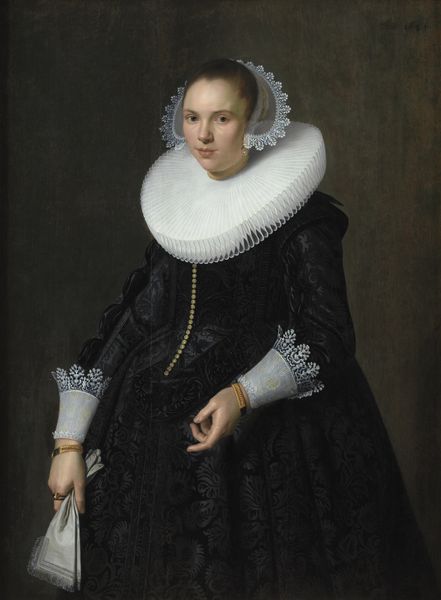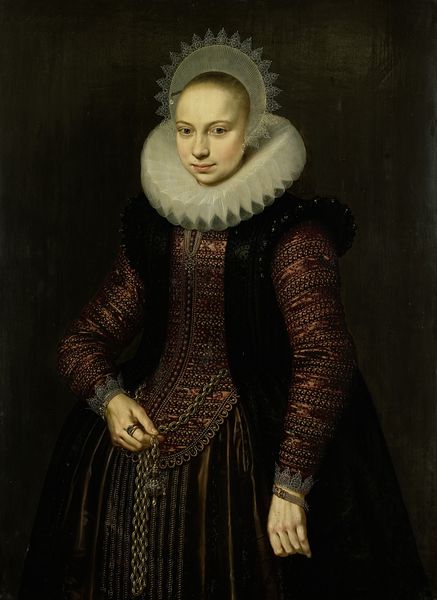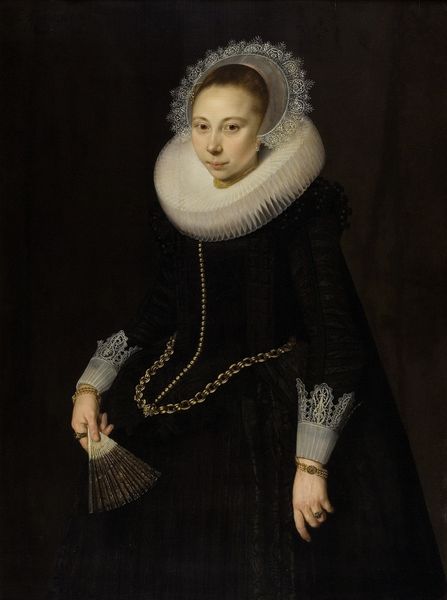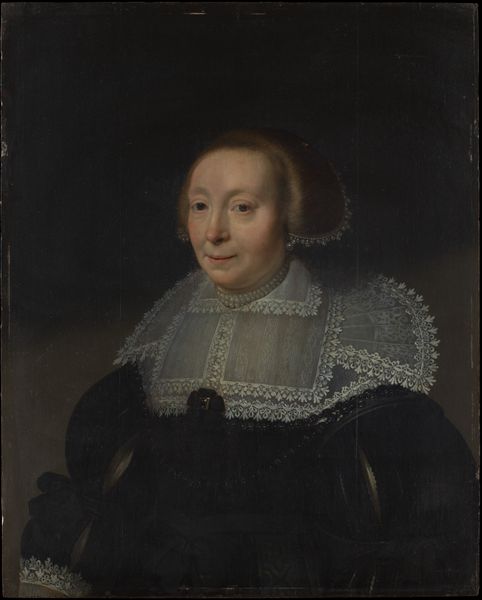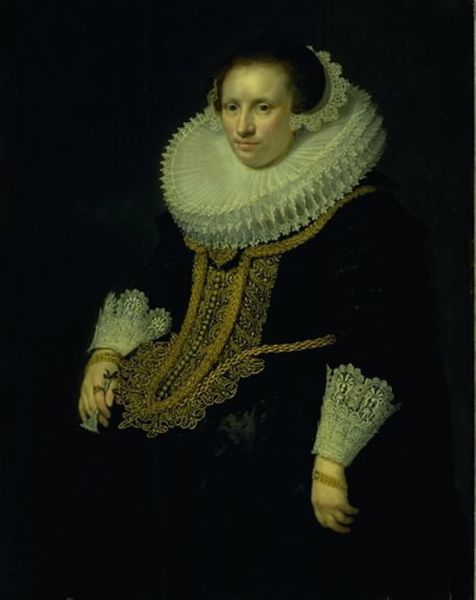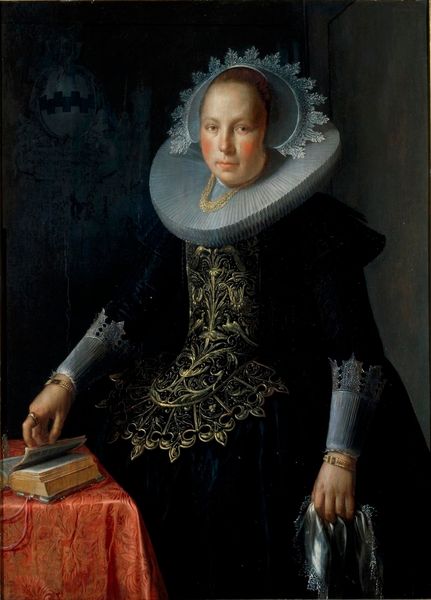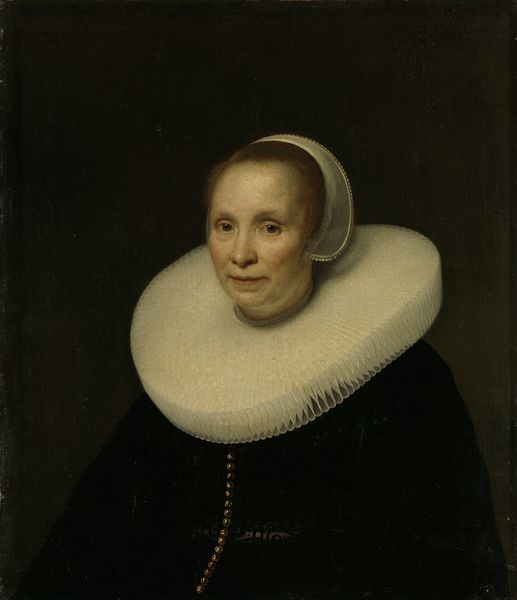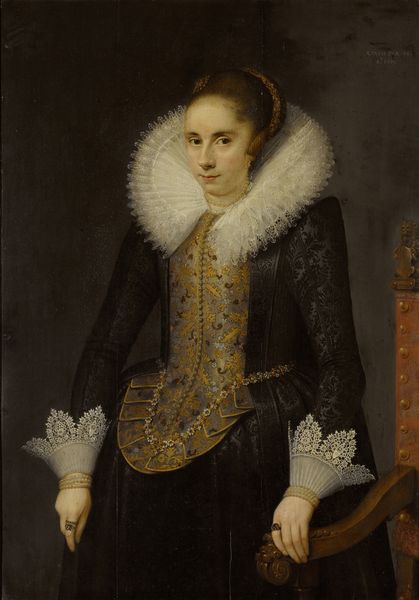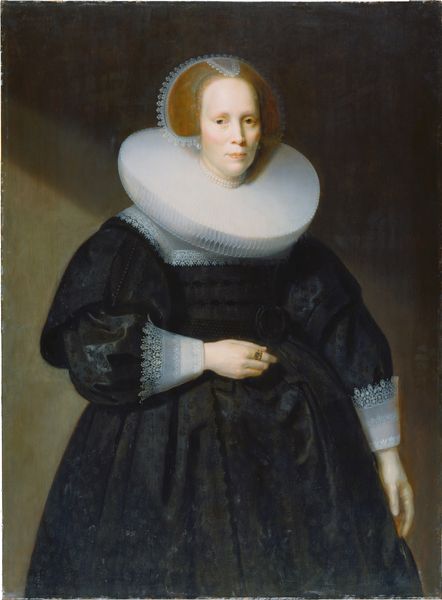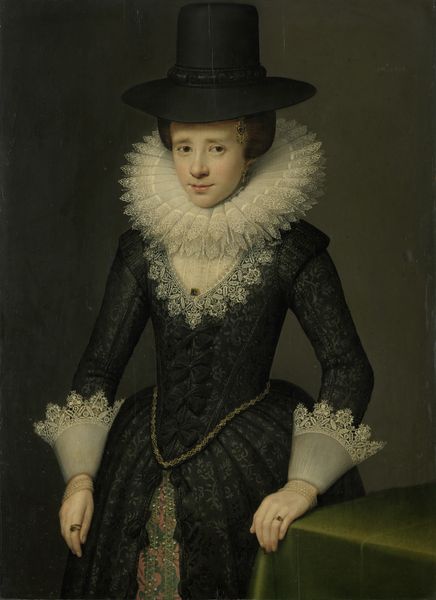
painting, oil-paint
#
portrait
#
baroque
#
dutch-golden-age
#
painting
#
oil-paint
#
portrait art
Dimensions: 39 x 31 1/2 in. (99.1 x 80.0 cm)
Copyright: Public Domain
Curator: Here we have Paulus Moreelse’s "Portrait of Catharina van Voorst", an oil painting dating to 1628. It's part of the collection here at the Minneapolis Institute of Art. Editor: The first thing that strikes me is the sheer volume of that ruff! It completely dominates the composition. All those radiating pleats feel incredibly starched and crisp, contrasting with the softer face peering out. Curator: And quite a statement of wealth and status, if you think about the labor involved in creating and maintaining such a garment. Consider the complex lace details at her cuffs, echoing the ruff, meticulously rendered with fine brushstrokes. It's not just about the aesthetics; it’s a display of economic power and the social hierarchies of the Dutch Golden Age. Editor: Absolutely. That immaculate white ruff against the darker fabric – almost like a halo – it focuses attention on her face, though. And that elaborately decorated black gown, those intricate gold embroideries depicting what seems to be botanical patterns... a celebration of life's inherent worth through symbols of nature. Curator: The material culture is crucial here. Black dye was expensive and a signifier of wealth. Moreover, consider how the accessories—the bracelets, rings, and gold chains—speak volumes about her place in society. It prompts questions about Dutch trade routes and the availability of resources. The brushwork itself contributes. See how Moreelse captures the shimmer of the silk and the heaviness of the gold thread, making the material almost palpable. Editor: And notice, she's holding a feathered fan, another status symbol, a soft delicate thing compared to all this fabric... The slight angling of her head and her reserved expression creates a sense of quiet dignity, perhaps a representation of societal expectation and modesty. Curator: So true; the portrait engages in a broader narrative of consumption, labor, and the complex intersection of art and economics within that period. Moreelse’s talent becomes a conduit for understanding the material world and societal dynamics. Editor: A silent testament of the wealth and the intricate beauty of a time long past. Curator: A moment perfectly preserved by careful craftsmanship, allowing a rare peek into a 17th-century life.
Comments
minneapolisinstituteofart almost 2 years ago
⋮
Catharina van Voorst (1595–1650), Lucas’s wife and cousin, wears sumptuous attire, including a fine pleated ruff and gold thread embellishments. Her carefully depicted jewels were probably made by her husband. She bore nine children, seven of whom survived to maturity. Two sons followed their father into his profession of goldsmith and jeweler. The portraits of Catharina and Lucas remained in the van Voorst family until 1968. Sometime during those 340 years, the oak panels were reduced in height by about eight inches—mostly at the bottom. Originally, this painting showed all of Catharina’s white feather fan. And what a fan it must have been: inserted into a gold handle and hung from a thick gold chain, the feathers were likely expensive imports from the Netherlands' vast trade empire.
Join the conversation
Join millions of artists and users on Artera today and experience the ultimate creative platform.
